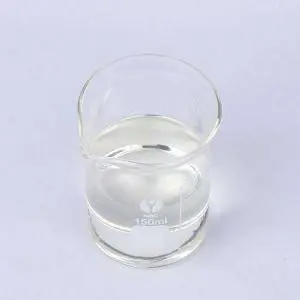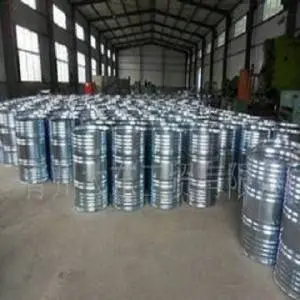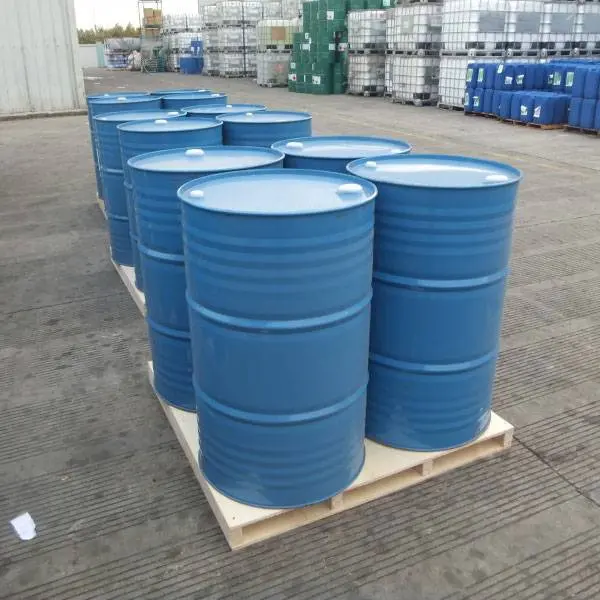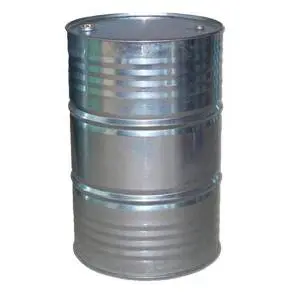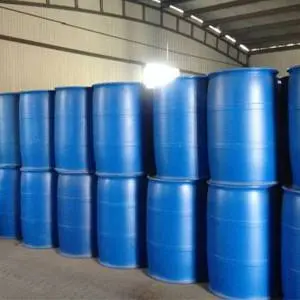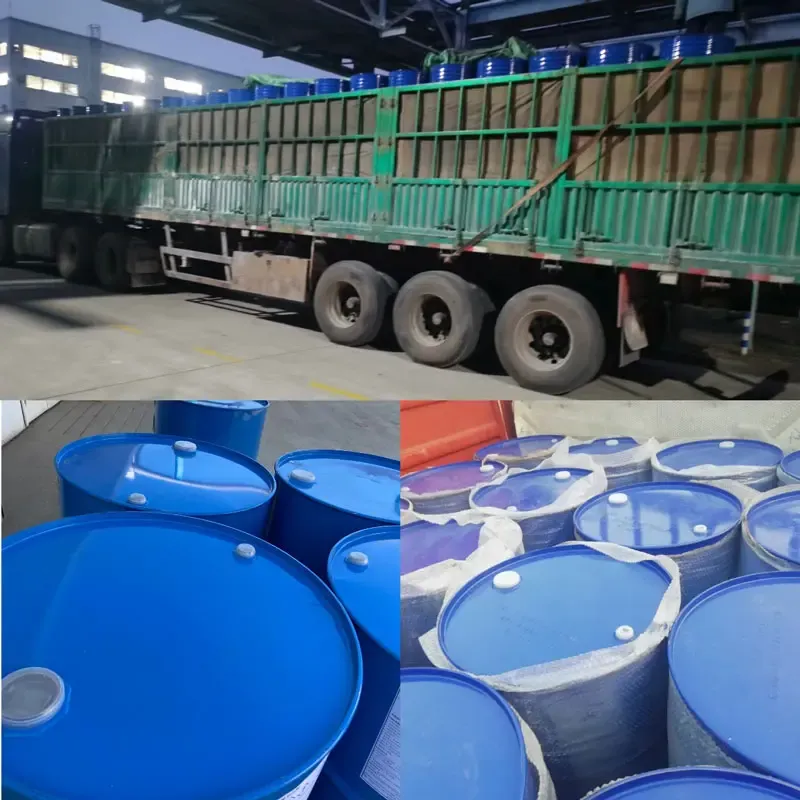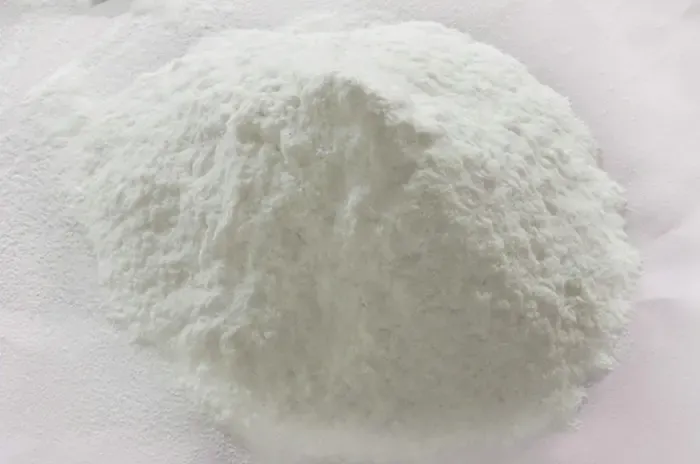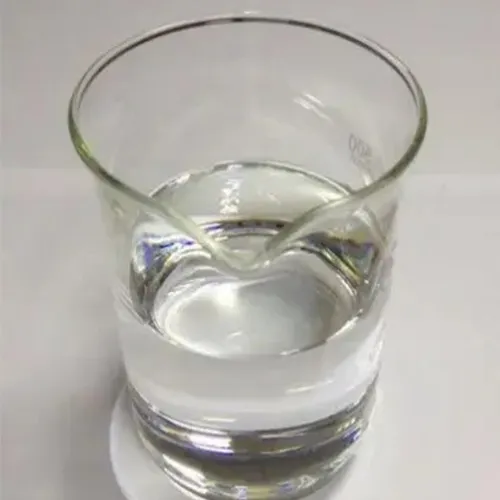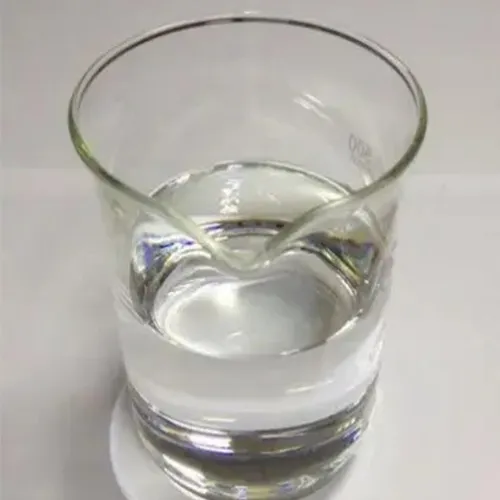High-Purity [N] & [N-DIMETHYL-1, 3-PROPANEDIAMINE] Solutions
Introduction to N, N-DIMETHYL-1, 3-PROPANEDIAMINE
N, N-DIMETHYL-1, 3-PROPANEDIAMINE (DMAPA) is a versatile diamine compound widely recognized for its pivotal role in various industrial applications. As a tertiary amine, it offers a unique combination of reactivity and stability, making it an indispensable building block in the synthesis of a broad spectrum of chemicals. Its distinctive molecular structure, featuring two amine groups, facilitates its use as an intermediate in producing high-performance surfactants, epoxy curing agents, polyurethane catalysts, and corrosion inhibitors. This detailed overview explores DMAPA's critical properties, manufacturing processes, diverse applications, and strategic advantages within the B2B chemical landscape. Understanding its nuanced capabilities is essential for decision-makers seeking to optimize product formulations and process efficiencies across sectors ranging from personal care to heavy industry.
Industry Trends and Market Dynamics
The market for specialized chemical intermediates like N, N-DIMETHYL-1, 3-PROPANEDIAMINE is experiencing dynamic shifts driven by evolving regulatory landscapes, increased demand for sustainable formulations, and innovation in end-use applications. Globally, the personal care and cleaning industries continue to be significant consumers, particularly for the production of amphoteric surfactants like cocamidopropyl betaine. Reports indicate a steady growth trajectory in the amphoteric surfactant market, projected to reach over $7 billion by 2027, with a CAGR exceeding 5% from 2020. This growth is largely fueled by consumer preference for milder, eco-friendly products.
Beyond personal care, the robust construction and automotive sectors are driving demand for epoxy resins and polyurethane systems, where DMAPA serves as a crucial hardener or catalyst. The emphasis on high-performance coatings, adhesives, and sealants (CAS) with enhanced durability and reduced VOCs further strengthens DMAPA's market position. Furthermore, the oil and gas industry’s continuous need for effective corrosion inhibitors, alongside the pharmaceutical sector's reliance on specific intermediates, ensures diversified and resilient demand for this compound. The trend towards supply chain optimization and localized production also influences sourcing decisions, favoring manufacturers who can demonstrate consistent quality and reliable delivery.
![High-Purity [N] & [N-DIMETHYL-1, 3-PROPANEDIAMINE] Solutions High-Purity [N] & [N-DIMETHYL-1, 3-PROPANEDIAMINE] Solutions](https://www.sincerechemicals.com/images/7_1-webp17344219231.webp)
Manufacturing Process Flow of N, N-DIMETHYL-1, 3-PROPANEDIAMINE
The production of N, N-DIMETHYL-1, 3-PROPANEDIAMINE typically involves a multi-step synthesis process, ensuring high purity and consistent product quality essential for demanding industrial applications. The primary route often begins with the reaction of dimethylamine with acrylonitrile, followed by catalytic hydrogenation.
Key Process Steps:
- 1. Raw Material Preparation: High-purity dimethylamine (DMA) and acrylonitrile (AN) are procured and stored under controlled conditions to prevent contamination and degradation. Quality checks confirm compliance with internal and industry standards.
- 2. Michael Addition Reaction: Dimethylamine reacts with acrylonitrile in a Michael addition, yielding N,N-dimethylaminopropionitrile (DMAPN). This reaction is typically performed in a reactor under controlled temperature and pressure, often without a solvent or with a polar solvent, to achieve optimal conversion and selectivity.
-
3. Catalytic Hydrogenation: The DMAPN intermediate undergoes catalytic hydrogenation. In this crucial step, the nitrile group (-CN) is reduced to a primary amine group (-CH2NH2) using hydrogen gas in the presence of a suitable catalyst, such as Raney nickel, cobalt, or palladium, often supported on carbon. This reaction requires precise control of temperature, pressure, and catalyst concentration to ensure complete conversion and minimize side reactions.
(Schematic Representation: DMAPN + H2 --(Catalyst)--> N, N-DIMETHYL-1, 3-PROPANEDIAMINE)
- 4. Catalyst Separation and Recycling: Post-hydrogenation, the catalyst is separated from the crude product mixture, typically through filtration or centrifugation. Effective catalyst recovery and recycling are vital for economic viability and environmental responsibility.
- 5. Purification and Distillation: The crude product undergoes a series of purification steps, primarily vacuum distillation. This process separates DMAPA from unreacted raw materials, byproducts, and any residual solvent, ensuring a product with high purity (>99%) suitable for demanding applications.
- 6. Quality Control and Packaging: The final product is rigorously tested against stringent specifications before packaging into appropriate container111s.
Testing Standards and Quality Assurance:
- ISO 9001 Certification: Manufacturing facilities adhere to ISO 9001 quality management systems, ensuring consistent product quality and process reliability.
- REACH Compliance: Products are manufactured in compliance with European Union's REACH (Registration, Evaluation, Authorisation and Restriction of Chemicals) regulations, affirming safety and environmental responsibility.
- Analytical Testing: Purity, moisture content, color, and amine value are routinely measured using advanced analytical techniques like Gas Chromatography (GC), Karl Fischer titration, and titrimetric methods.
Service Life and Target Industries:
DMAPA typically exhibits excellent stability under recommended storage conditions, with a shelf life of at least 12-24 months when stored in original, sealed container111s away from direct sunlight and moisture. Its robust chemical profile makes it ideal for target industries including:
- Petrochemical: As an intermediate for specialty additives and corrosion inhibitors.
- Personal Care & Cosmetics: Key ingredient for amphoteric surfactants (e.g., cocamidopropyl betaine) in shampoos, body washes, and cleansers, offering mildness and excellent foaming properties.
- Coatings & Adhesives: Used as an epoxy curing agent or polyurethane catalyst, enhancing material strength, adhesion, and chemical resistance.
- Water Treatment: Components in flocculants and anti-scaling agents.
- Pharmaceutical: Intermediates in drug synthesis pathways.
In typical application scenarios, DMAPA contributes to energy saving through more efficient reaction kinetics (e.g., in polyurethanes) and enhanced corrosion resistance in protective coatings.
Technical Specifications and Parameters
Understanding the precise technical specifications of N, N-DIMETHYL-1, 3-PROPANEDIAMINE is paramount for its effective integration into various chemical processes. The purity and consistency of DMAPA directly impact the performance and stability of end-products. Below is a comprehensive table outlining typical product specifications:
Product Specification Table: N, N-DIMETHYL-1, 3-PROPANEDIAMINE
| Parameter | Typical Value / Unit | Test Method |
|---|---|---|
| CAS Number | 109-55-7 | N/A |
| Molecular Formula | C5H14N2 | N/A |
| Molecular Weight | 102.18 g/mol | N/A |
| Appearance | Clear, colorless liquid | Visual |
| Purity (GC) | ≥ 99.0 % | ASTM E202 (Modified) |
| Water Content | ≤ 0.1 % | Karl Fischer |
| Amine Value | 1080 - 1100 mg KOH/g | Titrimetric |
| Boiling Point | 145-147 °C (at 760 mmHg) | ASTM D1078 |
| Flash Point (Closed Cup) | 37-40 °C | ASTM D93 |
| Specific Gravity (20/20°C) | 0.810 - 0.814 | ASTM D4052 |
| Color (APHA) | ≤ 10 | ASTM D1209 |
Note: These specifications are typical values and may vary slightly based on specific product grades and batch variations. Detailed Certificates of Analysis (CoA) are provided with each shipment.
Application Scenarios and Versatility
The dual amine functionality (primary and tertiary) of N, N-DIMETHYL-1, 3-PROPANEDIAMINE imparts exceptional versatility, making it a cornerstone in numerous industrial applications. Its reactivity enables it to participate in a wide range of chemical reactions, leading to diverse downstream products.
Key Application Areas:
-
Amphoteric Surfactant Production: This is arguably the most prominent application. DMAPA is a crucial precursor for creating mild, high-foaming amphoteric surfactants, particularly cocamidopropyl betaine. These surfactants are extensively used in:
- Shampoos, conditioners, and body washes (due to mildness and good lather).
- Dishwashing liquids and industrial cleaners (for excellent detergency and foam stability).
- Baby care products (hypoallergenic formulations).
-
Epoxy Curing Agents: As a diamine, DMAPA can react with epoxy resins, acting as a hardener to form cross-linked polymers. This application is critical for:
- High-performance coatings and paints (offering chemical resistance and durability).
- Adhesives and sealants (providing strong bonding and structural integrity).
- Composites and electrical encapsulants.
-
Polyurethane Catalysts: DMAPA, particularly its tertiary amine group, functions as a catalyst in polyurethane foam and elastomer production, promoting both gelling and blowing reactions. This leads to:
- Improved reaction kinetics and faster curing times.
- Enhanced physical properties of the final polyurethane product.
-
Corrosion Inhibitors: Its amine structure allows it to form protective films on metal surfaces, making it an effective component in:
- Oil and gas pipeline treatments.
- Cooling water systems and industrial lubricants.
- Dye Intermediates: DMAPA is utilized in the synthesis of various dyes, particularly reactive dyes, contributing to vibrant and stable colorants for textiles.
- Pharmaceutical Intermediates: Its reactive amine groups make it valuable in the synthesis of complex pharmaceutical compounds, acting as a building block for active pharmaceutical ingredients (APIs).
![High-Purity [N] & [N-DIMETHYL-1, 3-PROPANEDIAMINE] Solutions High-Purity [N] & [N-DIMETHYL-1, 3-PROPANEDIAMINE] Solutions](https://www.sincerechemicals.com/images/7_1-webp17344219231.webp)
Technical Advantages and Performance Benefits
Choosing a high-quality DMAPA delivers distinct technical advantages that translate into significant performance benefits for end-products and processes.
-
High Purity and Consistency: A superior manufacturing process ensures DMAPA with minimal impurities. This leads to:
- Predictable reaction kinetics and yields in synthesis.
- Enhanced product stability and shelf life, particularly in sensitive formulations like personal care.
- Reduced risk of off-odors or discoloration in final products.
-
Versatile Reactivity: The presence of both a primary and a tertiary amine group allows for diverse chemical transformations. This versatility is crucial for:
- Efficient synthesis of amphoteric surfactants with tailored properties.
- Effective cross-linking in epoxy systems, yielding robust materials.
- Catalytic activity in polyurethane systems, optimizing foam structure and curing.
-
Enhanced Product Performance: When incorporated into various formulations, DMAPA contributes to:
- Improved mildness and foam characteristics in personal care products.
- Superior mechanical strength, chemical resistance, and adhesion in coatings and adhesives.
- Effective corrosion inhibition in aggressive environments.
-
Supply Chain Reliability: Partnering with an established manufacturer provides assurance of:
- Consistent product availability and timely delivery.
- Compliance with global regulatory standards (e.g., REACH).
- Technical support and expertise for application development.
Vendor Comparison and Selection Criteria
Selecting the right supplier for N, N-DIMETHYL-1, 3-PROPANEDIAMINE is a strategic decision that impacts product quality, operational efficiency, and supply chain resilience. While multiple vendors exist, differentiation often lies in crucial aspects beyond just price.
Key Factors for Vendor Evaluation:
| Criterion | Importance | Description and Evaluation Point |
|---|---|---|
| Product Purity & Consistency | High | Verify purity levels (e.g., >99.0% via GC), low water content, and consistent batch-to-batch quality through Certificates of Analysis (CoA) and analytical reports. Inconsistent purity can lead to variable end-product performance and increased processing costs. |
| Regulatory Compliance | High | Ensure compliance with relevant international standards such as REACH, ISO 9001, and local chemical inventory regulations. This is critical for global market access and risk mitigation. |
| Supply Chain Reliability | High | Evaluate lead times, logistics capabilities, inventory management, and contingency plans. A robust supply chain minimizes disruptions and ensures uninterrupted production. Look for established track records in global distribution. |
| Technical Support & Expertise | Medium-High | A knowledgeable technical team can offer valuable guidance on application development, troubleshooting, and optimization. This is particularly important for customized solutions and complex formulations. |
| Pricing & Commercial Terms | Medium | While price is a consideration, it should be weighed against quality, reliability, and support. Evaluate total cost of ownership rather than just unit price. Favorable payment terms and contractual flexibility are also beneficial. |
| Customization Capabilities | Medium | For specific applications, the ability to provide tailored packaging, specific purity grades, or modified formulations can be a significant advantage. |
Prospective buyers are encouraged to request samples, review comprehensive technical data sheets, and perform pilot tests to validate product performance and vendor claims before making long-term commitments.
Customized Solutions and Partnership Approach
Recognizing that every industrial application presents unique challenges, leading suppliers of DMAPA offer more than just a standard product. A partnership approach involves providing tailored solutions that address specific client requirements, optimizing performance, and integrating seamlessly into existing processes.
- Tailored Purity Grades: While standard purity is high, certain sensitive applications (e.g., pharmaceuticals, electronics) may require even tighter specifications for specific impurities. Suppliers can offer refined grades to meet these stringent demands.
- Specialized Packaging: From small laboratory quantities to bulk isotank deliveries, packaging options can be customized to suit operational needs, including inert gas blanketing for enhanced stability or specific drum materials.
- Formulation Development Support: Leveraging in-house R&D capabilities, suppliers can collaborate with clients on developing new formulations or optimizing existing ones that incorporate DMAPA, ensuring optimal performance characteristics for the end-product.
- Flexible Delivery Schedules: Adapting to just-in-time inventory systems or specific production cycles, customized logistics and delivery schedules minimize storage costs and ensure continuity of supply.
- Regulatory Documentation and Support: Providing extensive regulatory dossiers, technical data sheets, safety data sheets (SDS), and supporting clients through their own product registration processes for applications involving DMAPA.
![High-Purity [N] & [N-DIMETHYL-1, 3-PROPANEDIAMINE] Solutions High-Purity [N] & [N-DIMETHYL-1, 3-PROPANEDIAMINE] Solutions](https://www.sincerechemicals.com/images/7_1-webp17344219231.webp)
Application Case Studies
Case Study 1: Enhancing Personal Care Formulations
A major global manufacturer of personal care products sought to improve the mildness and foaming properties of their flagship shampoo line, while also enhancing biodegradability. By transitioning to a high-purity DMAPA from a certified supplier for the synthesis of cocamidopropyl betaine, they achieved significant improvements. The consistent quality of the DMAPA ensured a stable reaction process, resulting in a surfactant with superior foam volume and stability, reduced skin and eye irritation potential, and a better environmental profile. This directly led to a 15% increase in consumer satisfaction scores related to product feel and performance, reinforcing their brand's commitment to quality and sustainability.
Case Study 2: High-Performance Industrial Coatings
An industrial coatings company required a curing agent for a new line of heavy-duty epoxy floor coatings designed for chemical processing plants. The challenge was to develop a coating that offered exceptional chemical resistance, rapid curing at ambient temperatures, and long-term durability against abrasion. Utilizing DMAPA as a co-curing agent in their epoxy resin system allowed them to formulate a coating that met these stringent requirements. The resulting floor coating exhibited superior resistance to a wide range of acids and alkalis, a reduced drying time of 30%, and a measured increase in abrasive wear resistance of 20% compared to previous formulations. This enabled the client to offer a premium product with an extended service life in harsh industrial environments.
Frequently Asked Questions (FAQ)
Q1: What is the primary role of N, N-DIMETHYL-1, 3-PROPANEDIAMINE in surfactant production?
A1: DMAPA serves as a critical intermediate for the synthesis of amphoteric surfactants, most notably cocamidopropyl betaine. Its amine groups react with fatty acids to form the desired surfactant structure, imparting mildness, excellent foaming properties, and good detergency to personal care and cleaning products.
Q2: What quality standards does your DMAPA meet?
A2: Our DMAPA is manufactured under strict ISO 9001 certified quality management systems. It consistently meets or exceeds the specifications outlined in our technical data sheets, with purity typically >99.0%. We also ensure compliance with relevant global regulatory frameworks such as REACH.
Q3: Can DMAPA be customized for specific applications?
A3: Yes, we offer customized solutions including tailored purity grades, specific packaging formats (e.g., drum sizes, isotanks), and assistance with formulation development. Our technical team is available to discuss specific requirements and develop bespoke solutions.
Q4: What are the typical lead times for bulk orders?
A4: Standard lead times for bulk orders generally range from 2-4 weeks, depending on destination and current stock levels. For urgent requirements or large-volume contracts, we recommend discussing your specific needs with our sales team for tailored scheduling. Our robust logistics network ensures efficient fulfillment.
Lead Time, Warranty, and Customer Support
Lead Time & Fulfillment:
We maintain significant inventory levels and a highly efficient logistics network to ensure reliable and timely delivery of DMAPA. For standard orders, lead times typically range from 14 to 28 days, depending on order volume, specific packaging requirements, and geographical destination. Expedited shipping options are available upon request for urgent requirements. We work closely with our clients to align delivery schedules with their production forecasts, offering flexible solutions for both spot purchases and long-term contracts. All shipments are accompanied by comprehensive documentation, including Certificates of Analysis (CoA) and Safety Data Sheets (SDS).
Warranty & Quality Commitment:
Our DMAPA is supplied with a comprehensive product warranty, guaranteeing that it meets or exceeds all published specifications at the time of delivery. We commit to consistent quality, backed by our ISO 9001 certified manufacturing processes and rigorous quality control protocols. In the unlikely event of any quality discrepancy, our dedicated quality assurance team will investigate promptly and provide appropriate resolution in accordance with industry best practices and contractual agreements. This commitment underscores our confidence in the superior quality and reliability of our products.
Customer Support & Technical Assistance:
We believe in fostering strong, collaborative relationships with our clients. Our dedicated customer support team is available to assist with inquiries ranging from order placement and logistics to technical questions and application support. Our experienced technical specialists provide expert guidance on product selection, formulation optimization, and troubleshooting, helping clients maximize the value of DMAPA in their specific applications. We offer comprehensive pre-sale consultation and post-sale technical assistance to ensure client satisfaction and operational success.
Conclusion
N, N-DIMETHYL-1, 3-PROPANEDIAMINE stands as a critical and versatile chemical intermediate, underpinning innovation and performance across a multitude of industries. Its unique molecular structure facilitates its use in high-growth sectors, from personal care surfactants to advanced epoxy and polyurethane systems. By adhering to rigorous manufacturing standards and offering comprehensive technical and logistical support, suppliers can empower businesses to leverage DMAPA's full potential, ensuring product excellence and sustained competitive advantage. The future demand for high-purity, reliably supplied DMAPA is poised for continued growth, driven by ongoing industrial innovation and evolving market requirements.
References
- Smith, J. (2018). Amphoteric Surfactants: Chemistry, Technology, and Applications. CRC Press.
- European Chemicals Agency (ECHA) - REACH registration dossiers for 1,3-Propanediamine, N,N-dimethyl-. Available at: echa.europa.eu
- U.S. National Library of Medicine, National Center for Biotechnology Information. PubChem Compound Summary for CID 8027, N,N-Dimethyl-1,3-propanediamine. Available at: pubchem.ncbi.nlm.nih.gov
- O'Driscoll, A. (2020). Polyurethane Chemistry and Technology. Wiley-VCH.
- Market Research Future. (2021). Amphoteric Surfactants Market Research Report - Global Forecast to 2027.
Post time: Oct . 06, 2025 13:45





